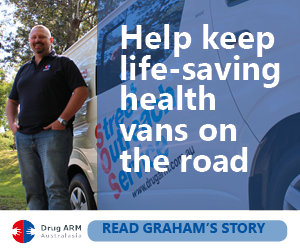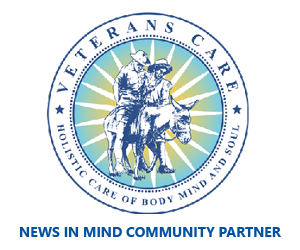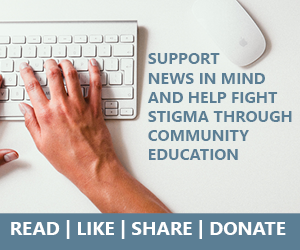“Pro-ana” websites are spaces for those with eating disorders to consult fellow sufferers for encouragement and punishment via skeletal selfies, purging tips, weight loss competitions, and motivational starving advice.
Victorian sales and marketing professional and recovering anorexic Caryn Baird said social media platforms like Instagram were detrimental to her perceptions of body image, but pro-anorexia websites were “toxic on a whole other level”.
“They taught me to be a ‘better’ anorexic, to hide my illness better and to do things that I cannot believe I actually did,” Baird told BuzzFeed news. “I would turn to these sites at my lowest and rely them on them to teach me the most extreme ways to lose weight.”
The sites were less about appearance and more about how to achieve weight loss, she said.
“They are very dark and seedy places flooded with images of girls cutting themselves, skeletal frames, gaunt and sunken-in faces.”
Sydney eating disorder and body image advocate Mia Findlay agreed that “tips and tricks on how to restrict or purge” were more dangerous than the images posted on pro-anorexia sites.
“I can’t stress how easy it is to access this information, how specific and well-explained it is,” Findlay told BuzzFeed News. “[I accessed these sites] three years into my six-year eating disorder and that moment I can pinpoint that my eating disorder went from mild to very, very serious.”
The 28-year-old convinced herself she was just “curious” when first accessing a pro-anorexia site.
“I never interacted with anyone on these sites, but just seeing the sheer number of people behaving the way I was normalised the behaviour – it didn’t seem like such a big deal,” she said.
“So even though the number of vocal members on these sites is low, I can guarantee there is a much larger, silent audience who are using this information to hurt themselves.”
Findlay said if she had never found the sites she wouldn’t have been able to feed the “denial” that convinced her she wasn’t sick, “which is a very powerful aspect of eating disorders”.
“I wouldn’t have picked up the binging and purging habits which caused an irreversible skin condition called rosacea and eventually led me to throw up blood very regularly,” she said.
Both women believe Australia should follow in the footsteps of France, where a law targeting pro-anorexia sites was passed last year that made it a crime to encourage anorexia, with offenders facing up to one year in prison and a €10,000 fine.
“To me, [eating disorders] are comparable with drug and alcohol addiction,” Baird said.
“We know it’s bad for us, that we shouldn’t do it, and that it can ruin our lives, but when you’re in the grips of addiction, reasoning goes out the window. The government has made drugs illegal and alcohol harder to access because it’s bad for us – why not do the same for pro-anorexia sites?”
Baird said the initial appeal of the sites was the “ease” of accessing them.
“At any time I could jump on my phone and have a step-by-step guide on how to be anorexic,” she said.
“I doubt I would have ever gone to the effort to get on to these sites if they were banned … I would not have known about the more extreme and dangerous ways of controlling my weight. The things these girls talk about doing is frightening. It’s like a little cult of cheerleaders! There is nothing off-limits for these girls and nothing they won’t do.”
Outlawing these sites would send a message that “eating disorders are not a choice”, Findlay said.
“Eating disorder sufferers think they’re making a choice because society tells them they are, it’s a diet gone wrong or a lifestyle, just silly girls on silly diets,” she said.
“The majority of the images you’ll find on pro-anorexia sites can be found in their original form in advertising and all over social media – this is a body standard we’re being bombarded with every day. … It’s not about vanity … Sufferers are trying to achieve a level of self-acceptance they’re constantly told they can only possess if they look a certain way.”
But researchers Marilyn Bromberg and Tomas Fitzgerald from Notre Dame Law School in Western Australia have been investigating the complexity of trying to regulate pro-anorexia websites in Australia and think more can be done.
“It is a very complex issue because people who are sick create the websites and if someone does see those images and does get sick, how do you prove that seeing those images caused their illness, so how can you effectively prosecute?” Bromberg told BuzzFeed News.
Fitzgerald said criminalising pro-anorexia websites would mean “overwhelmingly targeting” women who are “very unwell”.
“They’re doing it because they are looking for community support, they’re long-term sufferers, and publishing is a weird concept online because you’re interactive with your audience now and have a comment section and two-way communication most of the time so writing a law that captures both sides is difficult,” he said.
“Criminalisation runs the risk of giving these communities a sense that they are under siege and driving it underground.”
Fitzgerald said a lot of the content on pro-anorexia sites was taken from mainstream fashion magazines and websites.
“If you criminalise these sites,” he said, “someone who posts a picture of a thigh gap can be punished but someone who writes a book on how to obtain a thigh gap won’t be.”
The researchers agreed the government should develop a framework or set of guidelines for “traditional and social media to deal with this problem” in a consistent manner, based on evidence.
Baird believes the “black hole” of Instagram, which she would browse for “a few hours” daily, “fuelled” her eating disorder.
“Every day I could see up to 100 girls on Instagram with their hip bones, collar bones, and ribs protruding,” she said.
“My mind would race with toxic thoughts: Why shouldn’t I look like these girls? Why shouldn’t my bones be visible too?
“Social media accounts flooded with skinny girls receiving positive feedback for their tiny frames were impossible to escape and reinforced the thoughts my anorexia was already feeding me.
“In the end, I had to delete my Instagram to get some relief.”
Instagram’s attempts to moderate content have been largely unsuccessful until recently.
In April 2012 Instagram rendered key hashtags like #ProAna, #Thinspiration and #ThighGap unsearchable and disabled accounts that promoted eating disorders, but studies found pro–eating disorder hashtags actually multiplied as users tried misspelt hashtags to circumvent the banned words.
For example, #Anorexia was banned but 99 variations including #Anorexic, #Anorexique and #Anorexica were spawned.
Also, many women use the photo-sharing platform to scrapbook their recovery and share support for others trying to get better.
Around 2.5 million photos are tagged #EDrecovery, with users posting healthy food recipes and inspirational quotes.
Instagram this month released a tool for users suffering from mental illness where a user can anonymously flag a photo they deem concerning that has been posted by someone they think may be in need of help.
The feature sends users a note of support along with directions to resources where they can get help.
This article first appeared on ‘Buzzfeed‘ on 25 October 2016.
























